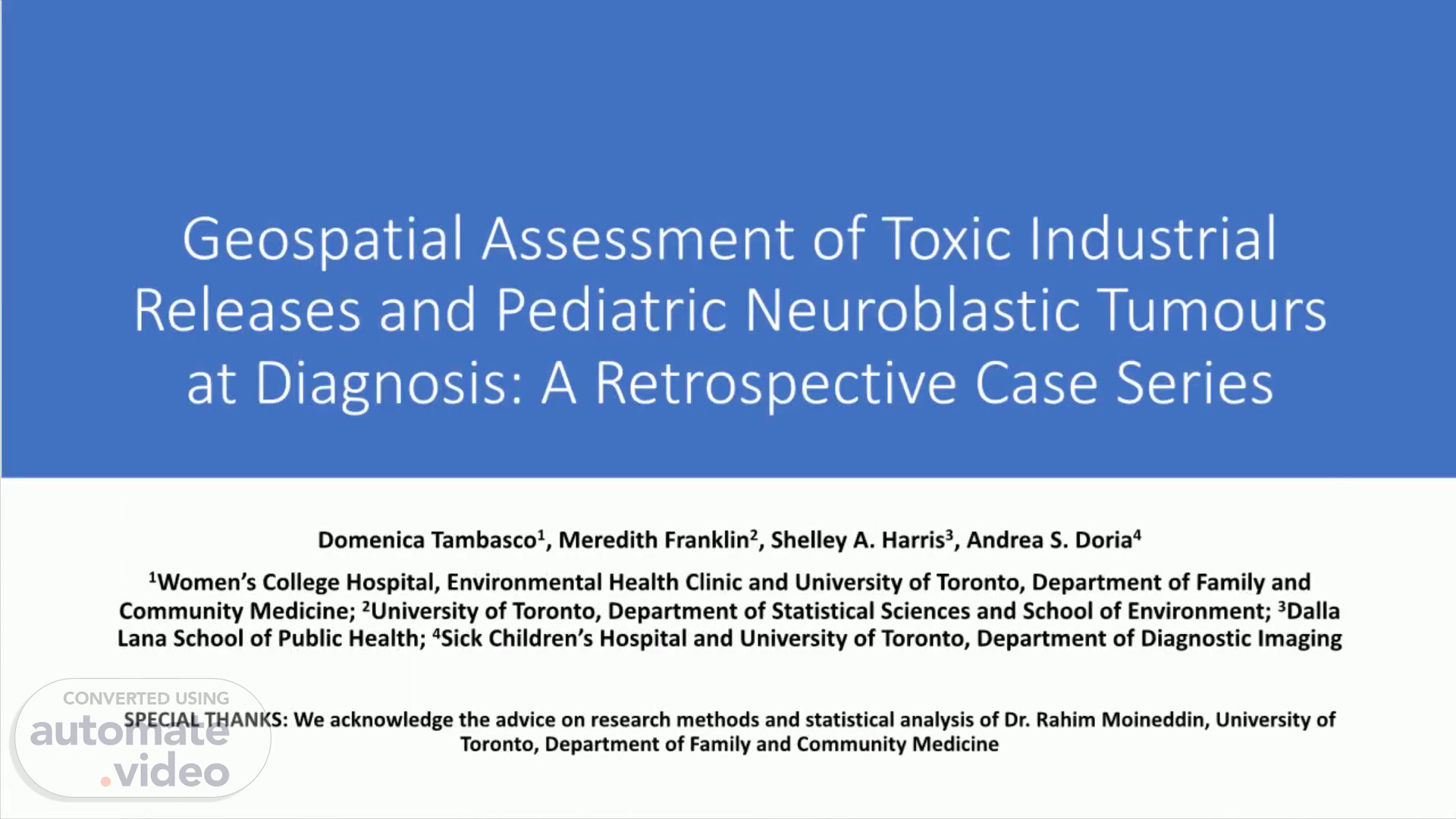
Page 1 (0s)
Geospatial Assessment of Toxic Industrial Releases and Pediatric Neuroblastic Tumours at Diagnosis: A Retrospective Case Series Domenica Tambascol, Meredith Franklin2, Shelley A. Harris3, Andrea S. Doria4 IWomen's College Hospital, Environmental Health Clinic and University of Toronto, Department of Family and Community Medicine; 2University of Toronto, Department of Statistical Sciences and School of Environment; 3Dalla Lana School of Public Health; 4Sick Children's Hospital and University of Toronto, Department of Diagnostic Imaging SPECIAL THANKS: We acknowledge the advice on research methods and statistical analysis of Dr. Rahim Moineddin, University of Toronto, Department of Family and Community Medicine.
Page 2 (41s)
Distribution of malignant and benign neuroblastic tumour cases in southern Ontario Neuroblastic Tumour Cases: • red=malignant • yellow=benign • 2 km buffer zones=blue Buffer zones of 2, 10, and 50 km were used in calculating quantity of emissions. As cases were from a single study site (SickKids Hospital in Toronto), most patients were residentially located in southern Ontario..
Page 3 (1m 26s)
Comparison of mean industrial pollutant exposure, calculated using IDW method from facilities' releases within 50 km radius 3 years prior to diagnosis, between benign and malignant cases Variable total releases dioxins and furans* (g TEQ) aluminum ammonia lead benzene arsenic nitrogen dioxide volatile organic compounds xylene Benign (mean, SD) in tonnes 750.60 (1154.40) 0.25 (0.23) 4.44 (7.00) 836.90 (1537.10) 0.56 (1.02) 11.19 (11.43) 0.41 (0.69) 397.14 (385.20) 240.90 (132.40) 29.87 (28.02) Malignant (mean, SD) in tonnes 812 (1548.90) 0.30 (0.40) 10.08 (35.32) 594.60 (946.50) 0.95 (2.49) 15.74 (26.01) 0.52 (1.65) 693M (1892.30) 245.40 (171.00) 30.25 (58.89) p-value (t-test) 0.73 0.25 0.02 0.24 0.06 0.04 0.42 0.02 0.82 0.94 Abbreviations: IDW=lnverse Distance Weighting; *g TEQ=gram toxic equivalents; SD-standard deviation.